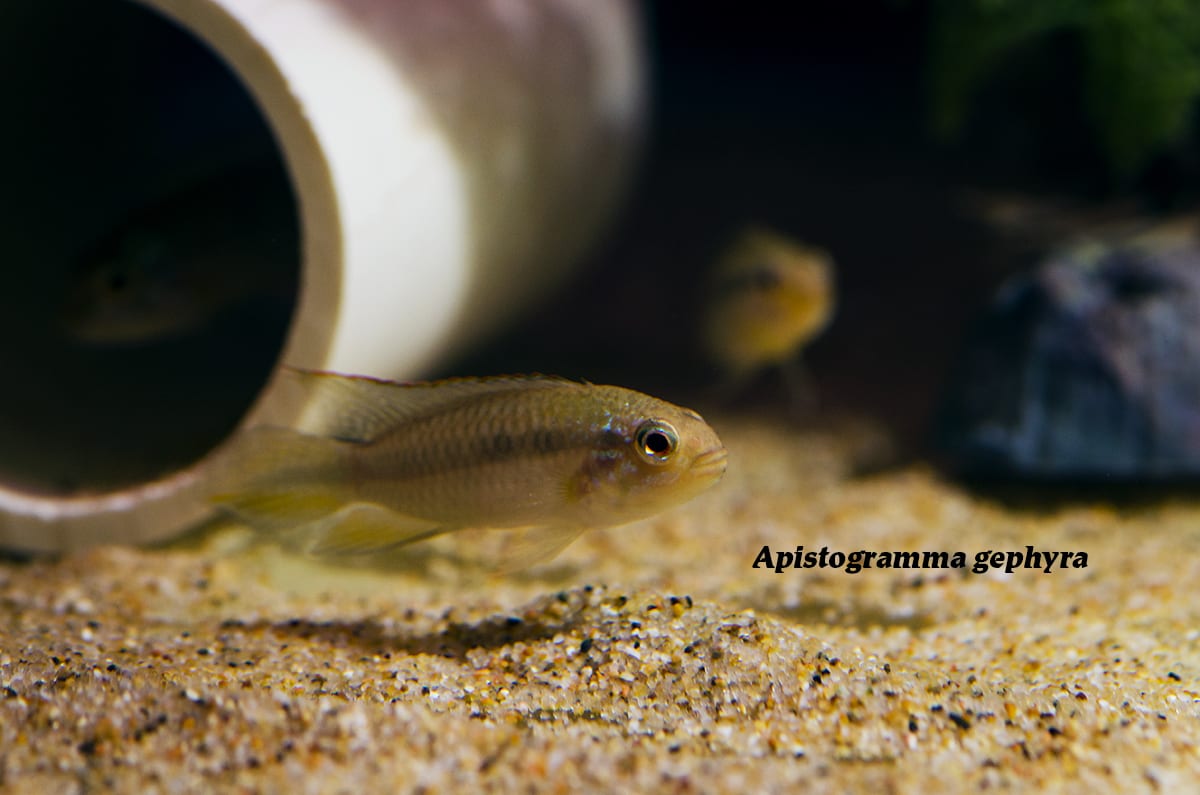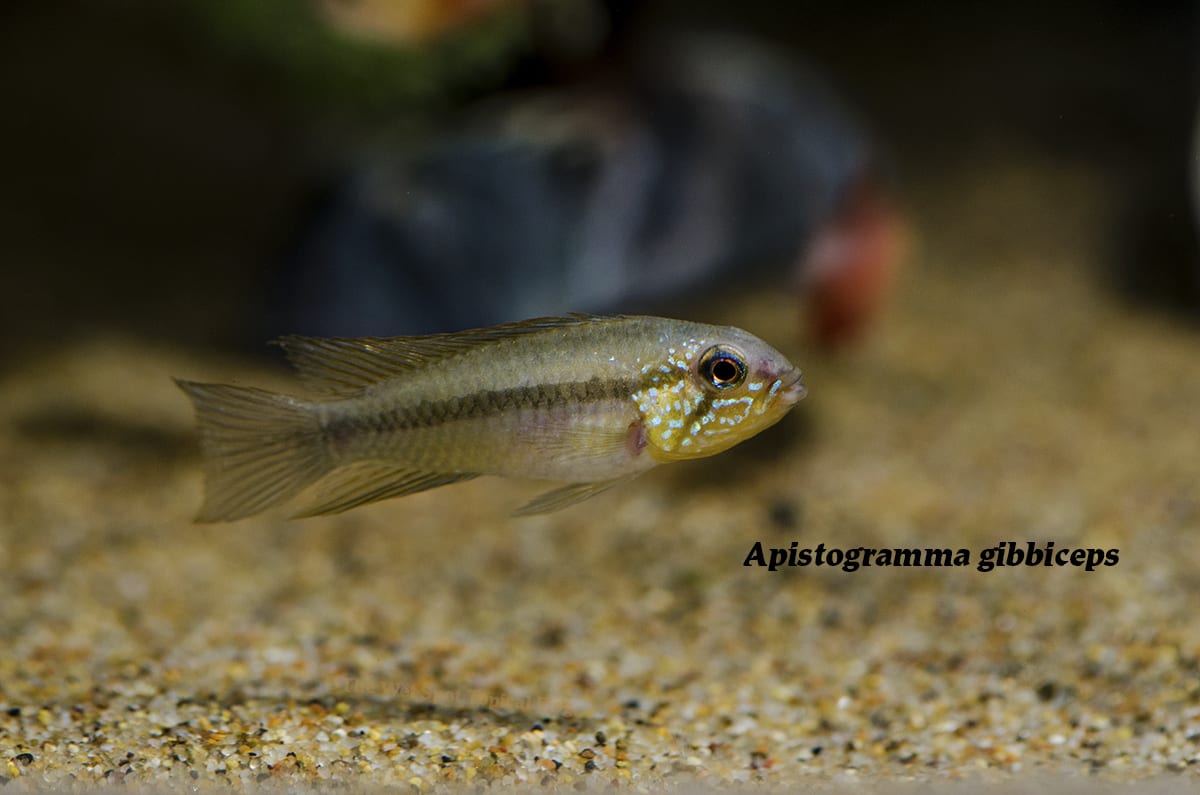Fisherman’s Dwarf
Fisherman’s Dwarf
Dwarf (noun): a member of a mythical race of short, stocky humanlike creatures who are skilled in mining and metalworking. From providing essential comic relief in Lord of the Rings to joyful singing retinues accompanying the fairest Disney Princess, dwarves have taught us that the best things come in small packages. Here at The Wet Spot we proudly house one of the largest retail cichlid collections available. Beautiful and exciting as these cichlids are, we know that keeping them in home tanks is sometimes too much of a commitment. Lucky for us, and our valued customers, there is a wonderful non-taxonomic assemblage of small species hailing from the family Cichlidae, known as ‘dwarf cichlids’. Popular with hobbyist aquarists for their beautiful colors, boisterous personalities, and peaceful temperaments, Apistogramma dwarf cichlids are perfect for the small, community tank setups most of us rep in our homes. Some of our favorites include Apistogramma elizabethae, Apistogramma gephyra, and Apistogramma gibbiceps.
Scientific NameApistogramma elizabethae
Temperature / pH73 to 84°F / 4.0 to 6.0 pH
Native LocationBrazil
Preferred DietSmall invertebrates
Native to the drainages of the Rio Negro system in northwestern Brazil, A. elizabethae, glows through the dark, slow-moving creeks and backwaters where fallen leaf litter collects. Exhibiting bright red chins, cheeks, and bellies, silvery-blue tribal-like facial markings, and extravagant blue and black fins, this species is highly sought after in the aquarium trade. Reaching just 2 inches in length, these Apistos are best kept in pairs or female-biased trios in smaller tanks, alongside small ‘dither’ fishes. It is important not to mix Apisto species since this triggers territorial behavior. Tanks should be equipped with plentiful cover and dim lighting. Furnishings can include, but are not limited to clay pots, pvc pipe, and rock piles formed to make caves and crevices. Substrate should be soft sand with roots, branches, and dried leaf litter. These fish are substrate-spawners, and eggs will be laid in crevices among the decor. Remove the male after spawning to avoid aggressive behavior. Mostly carnivorous in the wild, feeding on benthic invertebrates, in captivity these Apistos should be fed live and frozen foods like Artemia, bloodworm, and Daphnia, and can be trained to accept high-quality pellets. Particularly sensitive to water fluctuations, tanks should be maintained with temperatures between 73 and 84°F, pH of 4.0 to 6.0, and hardness between 18 and 54 ppm.
Scientific NameApistogramma gephyra
Temperature / pH73 to 86°F / 5.5 to 6.0 pH
Native LocationBrazil
Preferred DietSmall invertebrates
Described from the Rio Negro and Rio Franco drainages of Brazil, A. gephyra is an elegant, slender-bodied Apisto that is rare and highly sought after by dwarf cichlid lovers. Reaching just 1.5 inches in length, they have lovely yellow cheeks with blue bodies, a dark lateral stripe, extended red-tipped dorsal fins, and pointed spade-shaped caudal fins. Best kept in pairs, female-biased trios, or harems, these fish are cave spawners with maternal care of fry, though some reports indicate paternal rearing is not unheard of. With exciting social dynamics, these Apistos are best kept alongside small, diminutive species that are in no way competitors for resources within the tank. A benthic species by nature, tanks are best equipped with sandy substrate, roots, driftwood, dried leaf litter, and plentiful furnishings from rock caves to lengths of pipe. Voracious carnivores, these Apistos should also be fed regular live and frozen meals while being weaned onto high-quality pellets. Tanks waters are best kept with temperatures of 73 to 86°F, pH between 5.5 and 6.0, and hardness of 0 to 179 ppm.
Scientific NameApistogramma gibbiceps
Temperature / pH80 to 85°F / 5.0 to 6.0 pH
Native LocationRio Negro
Preferred DietSmall invertebrates
Found throughout the middle and upper stretches of Rio Negro, A. gibbiceps inhabits a wide range, and is thus a hardy Apisto with multiple variants found in differing habitat regions in the wild. Reaching 1.5 inches in length, they have lovely golden-yellow faces with a dark lateral line, dark vertical bars on their bellies, shimmering blue-green scale flecks, and extended fins. These Apistos are most commonly found in clear, acidic, soft waters, though can adapt to most dwarf cichlid setups including blackwater habitats. Optimal tank setups would include gravel substrate with variable-sized water-worn rocks and a large complement of furnishings up to the taste of the aquarist. Cave-spawners by nature, there should be caves and crevices formed in rock piles or the like if breeding is the goal. Best kept in harems to display social dynamics in large tanks, for 20 gallon tanks or smaller, pairs or trios are recommended. Found side-by-side with Cardinal Tetras in the wild, they do well in general community tanks with small ‘dither’ species. Feeding mostly on invertebrates in nature they should be fed regular live and frozen meals alongside high-quality cichlid pellets. Tanks waters should be maintained with temperatures between 80 and 84.5°F, pH between 5.0 and 6.0, and hardness of 20 to 54 ppm.
Looking to ‘ring’ in 2018 with some excitement? Dress up your tanks, and check out our Apisto ‘gems’. Give us a call to find the right pair for you. Happy New Year!


